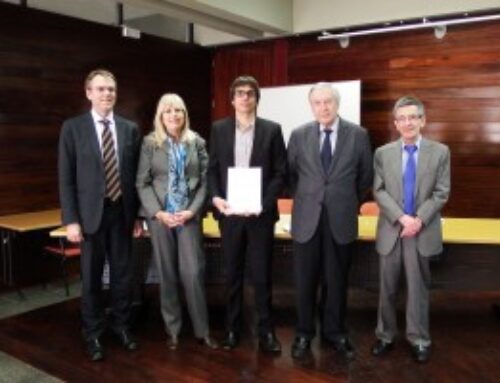Teresa Costa Cor, PhD in Business, defended her thesis on the risk management applications of distance-based techniques. The members of the jury were Dr. José Luís Vilar Zanon (Universidad Complutense de Madrid, UCL), Dr. Áurea Grané (Universidad Carlos III de Madrid, UC3M) and Dr. M. Mercè Claramunt (Universitat de Barcelona, UB). The supervisors were Dr. Eva Boj del Val (Departament de Matemàtica Econòmica, Financera i Actuarial de la Universitat de Barcelona) and Dr. Josep Fortiana (Departament de Probabilitat, Lògica i Estadística de la Universitat de Barcelona).
The work focuses on the study of statistical methodologies for solving real problems of non-life portfolios. The Generalized Linear Model, wich is already applied in the actuarial literature on pricing, credit scoring and calculation of provisions is described theoretically. The Distance Based Generalized Linear Model is proposed as an alternative methodology to solve the above problems.
Local coefficients of influence are defined for the Distance Based Generalized Linear Model tomeasure the relative importance of each observed variable in the expected loss. They are defined coefficients of influence for quantitative predictors and coefficients of influence for qualitative or binary predictors. They are built confidence intervals for the coefficients of influence based on the percentile of the bootstrap distribution from an adaptation of the Wald test. It is included a practical application with data from car insurance of Sweden. It is studied the application of distance based logistic regression model to estimate the probabilities of insolvency of new customers requesting a credit. To choose the model of credit scoring the probability of misclassification of new individuals and the costs of such misclassification are minimized. Different ways to choose the right cut point for some data in the distance based logistic regression model are proposed. It is included an application of credit risk Australian and German data and the results obtained are compared with other credit scoring methodologies that have been proposed by various authors on the problem of credit risk. The main methods for calculating the provision for outstanding claims in non-life insurance are described. It is proposed the Distance Based Generalized Linear Model to estimate future payments to be made by the insurance company. It is deduced the prediction error committed in future payments for calendar years. Finally, different ways of including risk margins in the calculation of provisions taking into account the context of European Directive Solvency II are defined. Data about amounts of claims paid that have been used by various authors within the actuarial literature are used to estimate the future payments and to calculate the provision with risk margins.



